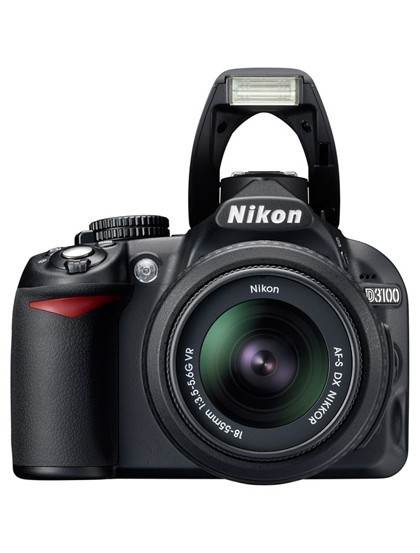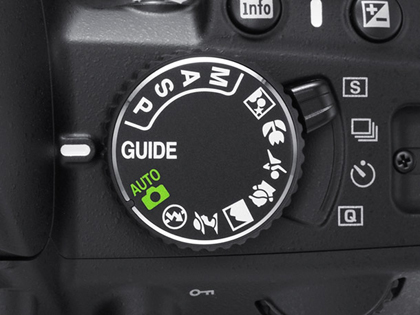Why you can trust TechRadar

Typical of a smallish DSLR, direct-access controls are kept to a space-saving minimum, but the usual suspects for exposure compensation, drive mode, menu, play, delete, and a 4-way thumb pad are all present and correct.
The main mode dial features the ubiquitous full Auto mode, as well as PASM and various scene modes including Portrait, Landscape, Child, Sports, Close-up and Night Portrait. You also get a Guide mode, which builds on the innovative system incorporated into the original Nikon D3000.

The Guide interface is split into three main areas of Shoot, View/delete and Set-up. In Shoot, for example, you can opt for Easy or Advanced operation for help with setting up shooting modes for softening backgrounds, freezing the motion of people or vehicles and more besides, and there's also information about timer and shutter settings, each accompanied by on-screen thumbnail photos for illustrating the salient points.
Drive modes include the usual single or continuous (3fps) options, as well as a self-timer delay of two or 10 seconds, switched via the main Setup menu. There's also a neat Quiet drive mode, which cancels the autofocus beep and reduces shutter release noise to a minimum.
What's lacking is direct access to some of the not-so-minor shooting parameters that advanced photographers like to adjust on a regular basis, including ISO, white balance and image quality/size.
As the next best thing, you can assign the Function button, which falls naturally under your left thumb, to any of these parameters via the main menu. Alternatively, you can set the Function button to control Active D-Lighting (see following page) even though you can only set this imaging function to on or off, instead of being able to choose between varying intensities, as featured in some of Nikon's more up-market cameras.

That said, if you shoot in RAW, you can freely adjust Active D-Lighting levels between off, low, normal, high and extra-high at the editing stage, if you're willing to fork out a further £130 for Nikon's Capture NX 2 software.
Sign up for breaking news, reviews, opinion, top tech deals, and more.
Another popular way of extending the reach of a limited set of control buttons is to make use of the LCD screen, and Canon in particular does a fine job of this with its Quick Control menu, as featured on cameras like the EOS 550D, EOS 60D and EOS 7D.
The D3100's so-called Information Display works in a similar way and, while it's not quite as elegant, it still offers quick access to image quality and size, white balance, ISO, focus mode, AF-area, metering mode, Active D-Lighting, movie frame size, flash mode, flash exposure compensation and regular exposure compensation.
That covers pretty much all the essentials but it's a shame you can't quickly access Picture Control settings without resorting to the main menu system, because these work extremely well, as we'll come to next.
